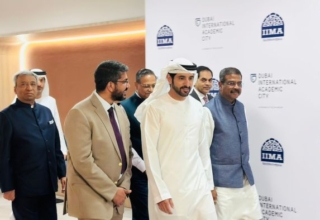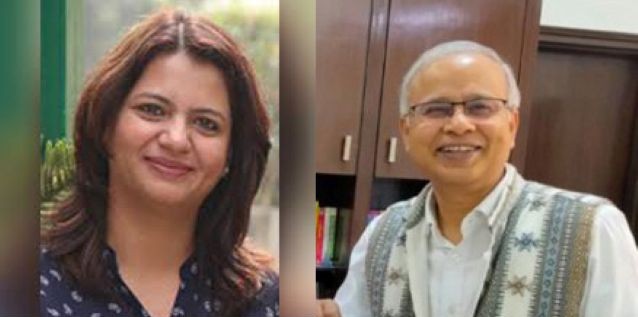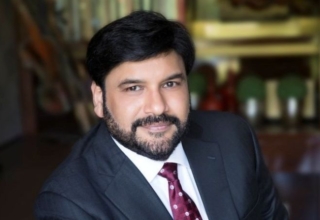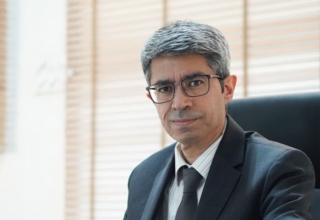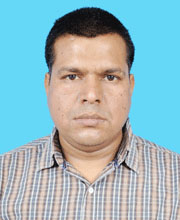
STIR (Schools and Teachers Innovating for Results) one of the fast-growing international NGOs, started its operations in India in 2012. STIR’s aim is to address the learning crisis in the developing world by empowering teachers to be changemakers. In 2013, it signed a memorandum of understanding with the Uttar Pradesh’s SCERT. In an email interview Sandeep Mishra, Government Program Director, India answered a range of questions about STIR work and impact posed by Curriculum Magazine editor, Autar Nehru. 
STIR TEACHER EMPOWERMENT MODEL
1. Please elaborate on the MoU with UP SCERT. Given that UP is most notorious for teacher politics and backward education, has this project made any initial impacts?
STIR believes in system’s capacity to scale the change and our core trust in the fact that solution for change exists within the system and we are consistently trying to harness the positively to mitigate the notoriety about the system. Since STIR and Govt. both wants to improve children learning outcome, it was not that difficult to ensure initial buy-in as we resonate on our common vision. Since we had been doing our direct intervention in Delhi and was scaling the learning through NGO partners programme, our learning generated from these two programmes helped us showing some early positive results. We been really lucky getting initial supports from UP government and we got a formal agreement to embed the model in 1 district (Lucknow) in UP for the first year. We gradually scaled this to 3 new districts in 2015 and now planning to expand the programme in another 3/4 new districts of the state. The so called notorious status did not concern us much actually the backward status definitely helped us to come to UP first as we wanted to test this model, as its success will definitely put forward a solid ground for other states to replicate. Some initial results such us increased motivation of teachers who are part of network helped us building our claim that teachers are changemakers and they can lead a large scale change. Apart from motivation of teachers we have also been able to create a cadre of motivated Education Leaders (responsible for running these networks at NRPC level), majority of ELs are teachers and they trained by the STIR on various leadership skills to lead the group of teachers to build a movement to improve children learning outcomes.
2. Dabbling with teacher motivation or bring them to a common platform for learning and sharing is a huge challenge, how did you overcome this barrier?
Although STIR believes that solution exists within the system yet it was difficult to find those ‘bright spots’ who could join the movement as front-liners, our idea to search for these ‘bright spots’ with a call for their practices helped us to generate initial buzz. We trained identified education leaders to create a buzz in their respective clusters which helps teachers to submit their practices in a prescribed format. They share their ideas which are in many cased very simple, no/lo cost solution that these teachers are using on their own to improve their schools and classroom, we call these practices ‘micro-innovation’ (MI). These MIs helped us to know about ‘bright spots’. Over a thousand of teachers from Lucknow came with very fantastic MIs which we recognized with the help of Roehampton University, London and gave them Innovator Certificate. Here generated a buzz and that helped teachers to believe that change is possible and their simple effort in this journey would lead a large scale change. Now it was not that difficult to ensure these teachers buy-in in the programme. They understood the important of building social capital to improve their learning to impact their children’s learning. As research shows that collaboration, sharing and learning helps individuals who are part of any professional group to improve their social capital. These teacher changemaker networks are local network of teachers who meets on regular interval to collaborate, share and learn from each other to improve. They learn about local solution from their peers, implement those solutions and help others to implement the same.
3. You have initiated a few imaginative and innovative programs to realize your objectives, can you elaborate on the journey so far?
These imaginative and innovative solutions were already there in the system what we did we gave them a structures framework/curriculum to scale them. Our journey started in Delhi in 2012, after one level of perfection of the model we started scaling this through two channels- NGOs partners programme and Government embedding. Any teacher who join STIR movement commits for a three years journey which is clearly defined and documented. Three different years are named as IGNITE, INTEGRATE and INGRAIN for the respective years.
Ignite: re-ignite the spark in teachers through bringing them into a local Teacher Changemaker Network – a network of 30 to 40 colleagues across schools who meet monthly to collaborate to improve learning levels
Integrate: gradually expose teachers in the network to key evidence-based practices (e.g. in areas such as reading or classroom practice) and provide support to integrate and adapt them in their own classroom settings, so their teaching practice improves
Ingrain:fully embed the networks into the structures of governments, training institutes, NGOs and unions, creating a permanent force for improvement within an education system – with teachers taking on ownership and responsibility for driving the improvement process themselves.
4. Micro interventions from your organizations have been there for some time now, is there a mechanism of presenting some of these as models for replication on scale?
We have already reached to 12000 teachers who are part of our network. We have started our Govt embedding programme in Delhi in the this academic session and looking forward to scale in couple of more state in coming year. Our initial networks shows some anecdotal successes on teachers motivation and their transformation to growth mindset. We have also been able to see significant change in children’s learning levels where these chanegmakers are implementing their practices. Since we are a young organization and learning very fast with the help of different models, we are committed to test and perfect the model to enable it to be easy to scale in different systems and geographies. In order to learn what really motivates teachers, we are conducting a large scale Randomize Trail in Uttar Pradesh and Delhi. We hope we would be able to learn about some of the non financial incentive (which we are testing out) which help increasing teachers motivation. We have proven results of some of practices which improves learning but so far as systemic scaling is concerned I think we need some more time to prove.
5. A thought on teacher issues and challenges that India faces today from your own experience?
I think teachers motivation is the key issue the country is grappling with. Evidences show that nearly 25% teachers on any given day are absent from the schools due to various reasons. These teachers are also involved in many non teaching vocations. And there is clear absence of any recognition system for good teachers. These couple of challenges push teachers be less accountable for their true profession. In teacher training institutions there is a clear lack of professionals, some of them are really struggling with faculties and are not able to provide follow up support. Teachers training (in whatever form it is being provided) has become a stand alone process and there is struggle to provide on-site support to teachers who are struggling with various issues on regular basis. These challenges demotivate teachers and they become less responsive in long run. There are many more but motivation tops the list in my sense. clear absence of any recognition system for good teachers. These couple of challenges push teachers be less accountable for their true profession. In teacher training institutions there is a clear lack of professionals, some of them are really struggling with faculties and are not able to provide follow up support. Teachers training (in whatever form it is being provided) has become a stand alone process and there is struggle to provide on-site support to teachers who are struggling with various issues on regular basis. These challenges demotivate teachers and they become less responsive in long run. There are many more but motivation tops the list.
6. What would key recommendations for policy makers or the policy itself while addressing these issues?
1. There must be a clear local learning platform for teachers where they could collaborate, share and learn from their peers to improve
2. Positive and motivated teachers should be recognized for their effort to encourage others to improve. System should develop a very structure reward/recognition structure which could recognize good teachers in the system to by-cot the ‘mimics’.
3 Teachers training is crucial- pre-service and in-service both should be improved by hiring more resources at district and block levels
4. An academic support structre (purely dedicated to academic support) should come in place in the form of Cluster Leaders (ELs could be seen and improves in this direction) to support teachers.
5. Teachers must be freed from non-teaching avocations and there should be a clear accountability parameters for them to perform and for system to provide an eco-system.
6. Recruitment is key- Govt should come up with a very robust teachers recruitment process to mitigate long term disastrous outcomes.




